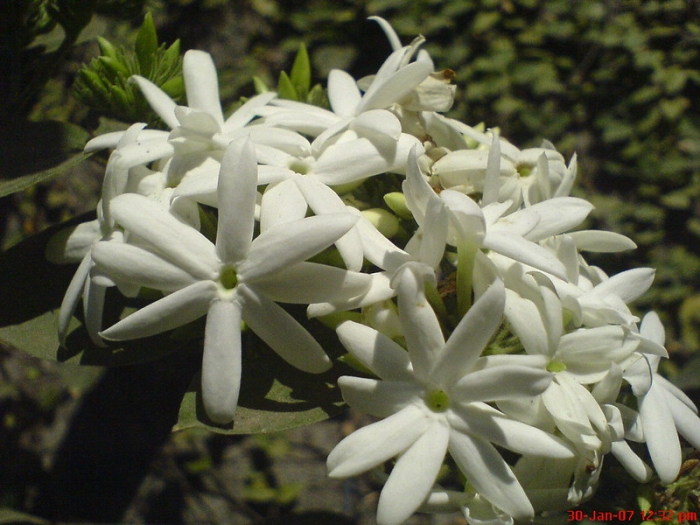Common Jasmine
(Jasminum officinale)
Common Jasmine (Jasminum officinale)
/
/

Dinesh Valke
CC BY-SA 2.0























































Estimated Native Range
Summary
The plant’s ornamental appeal lies in its beautiful, fragrant flowers and its ability to cover structures, making it ideal for trellises, arbors, and fences. It is also used for perfumery and aromatherapy. Common Jasmine requires well-drained soil, tolerates a range of soil types, and prefers full sun to part shade. While it is generally easy to maintain, it can be susceptible to pests such as aphids and diseases like powdery mildew. Pruning is recommended to maintain its shape and promote vigorous growth. It is not known to be invasive but can spread quickly in suitable conditions.CC BY-SA 4.0
Plant Description
- Plant Type: Vine, Shrub
- Height: 20-30 feet
- Width: 7-15 feet
- Growth Rate: Rapid
- Flower Color: White
- Flowering Season: Spring, Summer
- Leaf Retention: Deciduous
Growth Requirements
- Sun: Full Sun, Part Shade
- Water: Medium
- Drainage: Slow, Medium, Fast
Common Uses
Bee Garden, Bird Garden, Butterfly Garden, Deer Resistant, Drought Tolerant, Edible*Disclaimer: Easyscape's listed plant edibility is for informational use. Always verify the safety and proper identification of any plant before consumption., Fragrant, Groundcover, Hedges, Hummingbird Garden, Salt Tolerant, Showy Flowers, Street Planting
Natural Habitat
Mountainous regions, forest edges, and along riverbanks in South Asia and West Asia
Other Names
Common Names: Poet’s Jasmine, Jessamine, Summer Jasmine, White Jasmine, True Jasmine, Weißer Jasmin, Echter Jasmin, Jazmín Blanco, Jasmin Commun, Jasmin Officinal
Scientific Names: , Jasminum officinale, Jasminum officinale f. affine, Jasminum officinale var. tibeticum, Jasminum officinale var. officinale, Jasminum officinale var. piliferum, Jasminum vulgatius, Jasminum poeticum, Jasminum affine, Jasminum officinale f. aureovariegatum
GBIF Accepted Name: Jasminum officinale L.